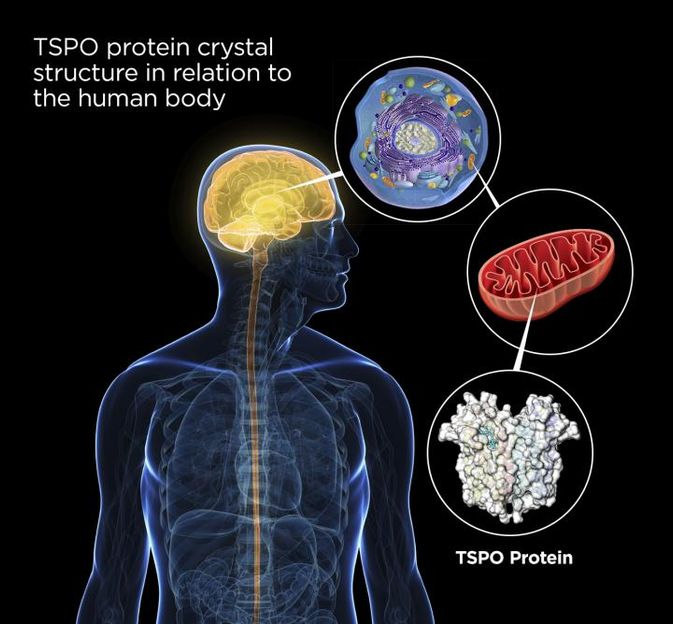First-ever view of protein structure may lead to better anxiety drugs
Advertisement
When new medicines are invented, the drug may hit the intended target and nullify the symptoms, but nailing a bull's eye - one that produces zero side effects - can be quite elusive. New research conducted at Michigan State University and published in Science has, for the first time, revealed the crystal structure of a key protein, TSPO, which is associated with several forms of anxiety disorders. By identifying the structure at the atomic level, scientists can now pinpoint where drugs may interact with the protein.

New research conducted at Michigan State University and published in the current issue of Science has, for the first time, revealed the crystal structure of a key protein, TSPO, which is associated with several forms of anxiety disorders.
Courtesy of Deon Foster
"Many other scientists have studied this protein, but what exactly it is doing has been very difficult to determine," said Shelagh Ferguson-Miller, University Distinguished Professor of biochemistry and molecular biology. "Drugs and other compounds bind to TSPO, but without knowing the structure, their effects are hard to interpret. Now that we've obtained the structure, it could provide important clues regarding anxiety disorders and the basis for a new generation of anti-anxiety drugs."
These next-generation treatments could be years away, she added. This is partly due to TSPO being shunned from the spotlight. Even though it was discovered in 1977 during studies of the anxiety-controlling characteristics of Valium, it was deemed as a peripheral binding site, one not pursued by pharmaceutical companies as a key target for new drugs.
Interestingly enough, TSPO is found at high levels in regions of tissue damage. This finding was used to aid in imaging areas of inflammation in the brain. In these PET scans, doctors can view damaged regions because TSPO is concentrated and highlighted there.
Using X-ray technology rather than PET scans, Ferguson-Miller and her team were able to solve the crystal structure of the protein - creating an image of TSPO at a molecular level. This gave the researchers an increased understanding on how TSPO interacts with cholesterol and how this relationship affects the creation of steroid hormones.
Cholesterol plays a key role in the creation of steroid hormones. Without cholesterol, steroids hormones couldn't be made. It appears that TSPO plays a key role in shuttling cholesterol into mitochondria, the cells' powerhouse where the cholesterol is converted to hormones that are essential for our bodily functions.
The team also identified a TSPO mutant, which provided an important breakthrough. People suffering from conditions such as bipolar disease are found to have a higher probability of having this TSPO mutation, which is fairly prevalent. Cholesterol seemed to bind less strongly, perhaps related to the fact that the mutant structure is more ridged, limiting cholesterol interaction.
"When we compared the two forms of TSPO, normal and mutated, we were able to see substantial differences in structure," Ferguson-Miller said. "This could be a clue as to why the human mutant form has an association with anxiety disorders."
This insight into a previously unseen structure, one that could lead to new understanding of human disease, provides a strong argument for conducting basic science research.
The TSPO proteins used in this work came from bacteria rather than human cells, but they are closely related. Getting enough of the pure human protein to carry out these types of investigations is difficult, though a future objective of these scientists.
"One reason that TSPO's function has been so hard to pin down is that many studies have been done in the complex and diverse environments of whole cells and tissues, where a clear-cut interpretation of the results is difficult," said Fei Li, MSU postdoctoral researcher and co-author. "We were able to obtain a pure protein that was still functional, but isolated from these complications."

















































